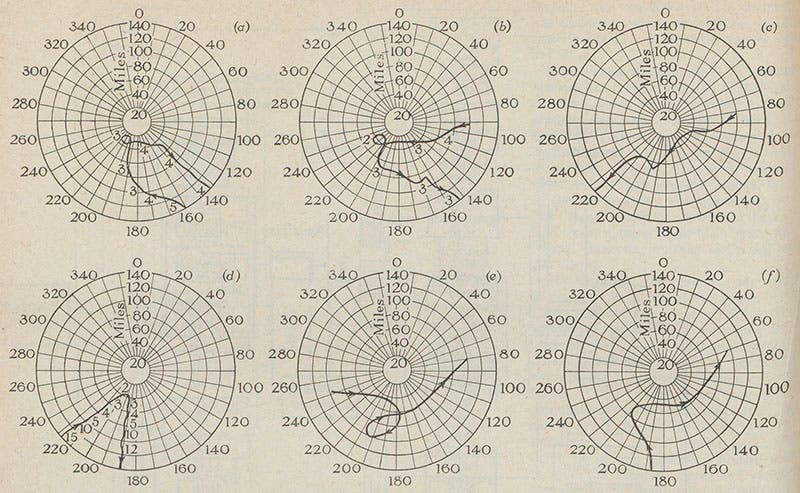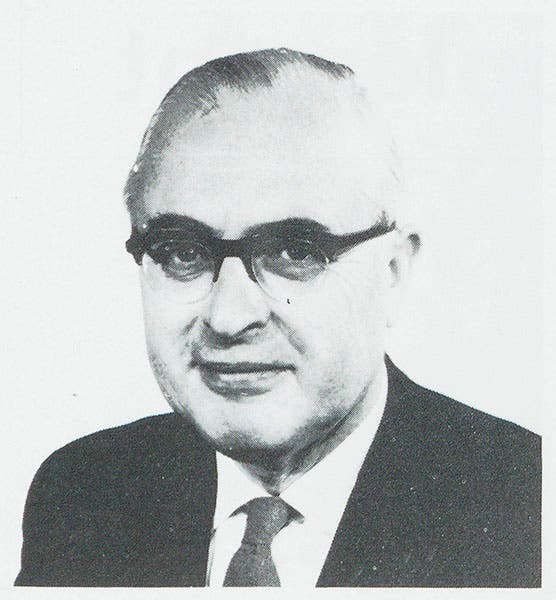Scientist of the Day - Geoffrey Dummer
Geoffrey W.A. Dummer, a British electrical engineer, was born in the northern English city of Hull on February 25, 1909. Dummer was part of the first generation of amateur radio operators and started building crystal sets when he was twelve years old. After graduating from high school, he applied for a job at the Mullard Radio Valve Company, where he became skilled at diagnosing faulty valves, as vacuum tubes are known in Britain. Subsequent positions at other English electrical firms supplied him with hands-on experience working with cathode-ray tubes and high-frequency radio transmitters, which he supplemented by taking night classes at the Manchester College of Technology and the Regent Street Polytechnic.
Following the outbreak of World War II, Dummer joined the staff of the British Air Ministry Research Establishment (later renamed the Telecommunications Research Establishment, or TRE) and worked on radar systems for the Royal Air Force. Among other innovations, he contributed to the development of the Plan Position Indicator, the most common form of radar display. Dummer’s greatest claim to fame at TRE was overseeing the creation of radar training apparatus. These systems generated simulated flight paths on a radar screen, allowing new operators to familiarize themselves with the equipment without diverting actual aircraft away from the battlefield (second image).

Sample flight paths input into the Chain Home Low (C.H.L.) radar training system, from G.W.A. Dummer, “Aids to Training—The Design of Radar Synthetic Training Devices for the R.A.F.,” Proceedings of the Institution of Electrical Engineers, Part III (Radio and Communication Engineering), vol. 96, 1949 (Linda Hall Library)
Dummer later shifted his attention from radar systems to the capacitors, resistors, and other circuit components used to construct them. As a member of TRE’s Radio Component Research and Development Committee, he launched a systematic campaign to improve the reliability of electronic equipment. Many malfunctions could be traced to faulty wires or solder joints linking the various components in a circuit, so Dummer became interested in manufacturing processes that would minimize the number of these connections. In 1952, he traveled to Washington, D.C. to present his research at a symposium organized by the American Institute of Electrical Engineers, the Institute of Radio Engineers, and the Radio-Television Manufacturers Association. (third image)
Dummer’s paper, “Electronic Components in Great Britain,” discussed the creation of resistors by depositing thin films of a gold-platinum alloy on glass and early efforts to manufacture printed circuit boards. Dummer concluded by offering listeners a remarkable “peep into the future” of the electronics industry. “With the advent of the transistor and the work in semiconductors generally,” he noted, “it seems now possible to envisage electronic equipment in a solid block with no connecting wires.” He then described how one could construct such a device by applying layers of insulating and conducting material on a semiconductor substrate (fourth image).
Today, historians acknowledge Dummer’s paper as the first published description of the modern integrated circuit. His prediction did not attract a great deal of public attention, but it hinted at research being carried out behind the scenes at laboratories on both sides of the Atlantic. In 1956, Dummer and his colleagues at the Royal Research Establishment (RRE, the successor to TRE) started investigating techniques to alter the resistance of silicon. The following year, they partnered with a British electronics firm to build a model illustrating how a “solid circuit” might eventually be designed. (first image).
Despite these preliminary steps, Dummer and the RRE team were unable to construct a functional integrated circuit before Texas Instruments (TI) engineer Jack Kilby assembled a working prototype in September 1958. The following year, Robert Noyce at Fairchild Semiconductor filed a patent for the planar integrated circuit, which more closely resembled Dummer’s original vision by replacing the wires Kilby used to connect various components with layers of metal separated by insulating silicon dioxide. Although the British government continued to support integrated circuit research at RRE, American companies like TI and Fairchild took the lead in commercializing the technology.
Dummer remained on staff at RRE until 1966, when he retired to become an author and consultant (fifth image). He appeared on the BBC to discuss the latest high-tech breakthroughs and wrote dozens of books about the electronics industry before his death in 2002. (The Linda Hall Library has 46 of them in its stacks.) These volumes, along with his technical achievements, serve as a fitting memorial to the man that one obituary referred to as the “prophet of the integrated circuit.”
Benjamin Gross, Vice President for Research and Scholarship, Linda Hall Library. Comments or corrections are welcome; please direct to grossb@lindahall.org.









